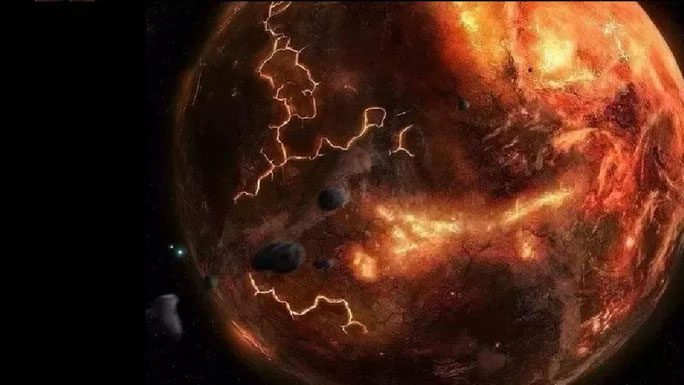Data on ancient geological events reveals that Earth truly has a slow, stable yet catastrophic “heartbeat.”
This conclusion comes from a research team at New York University (USA), based on a massive dataset covering 260 million years of Earth’s geology, including 89 extreme events.
According to a publication in the scientific journal Geoscience Frontiers, the Earth’s “heartbeats” occur approximately every 27.5 million years, marked by countless catastrophic events.
These include volcanic activity, mass extinctions, tectonic plate rearrangements, fluctuations in sea levels, and oceanic anoxic events, all occurring at each “heartbeat.”

Earth will become extremely uninhabitable at each “heartbeat” – (Graphic image from NASA).
In other words, at each “heartbeat,” our planet reorders itself in some way. This is evidenced by the fact that the aforementioned events often occur simultaneously throughout history, accompanied by mass extinctions.
According to Science Alert, this hypothesis has been raised since the 1920s and 1930s, suggesting that every 30 million years, our planet experiences a “heartbeat.”
More advanced techniques and richer data in the present have enabled scientists to test these hypotheses and arrive at more accurate figures.
This figure closely aligns with a 2018 study by two scientists from the University of Sydney (Australia), which indicated that Earth’s carbon cycle and tectonic plate activity operate on a cycle of approximately 26 million years.
The new research further indicates that at each “heartbeat,” disasters often have a cause-and-effect relationship, with one event triggering a chain reaction leading to another.
However, the deeper reason – why our planet must change every 27.5 million years – remains a mystery.
Some other studies have suggested that these disaster cycles may be related to comet impacts, or possibly influenced by a “ninth planet.”
The ninth planet is a hypothetical planet hiding somewhere in the solar system, potentially very large, with a gravitational influence strong enough to affect many other planets.
Nonetheless, the authors from New York University still attribute the greatest uncertainty to Earth itself.
“The tectonic pulses and cyclical climate changes may be the result of geophysical processes related to plate tectonics and mantle plumes in the crust, adjusted by astronomical cycles related to the movements of Earth, the Solar System, and the galaxy,” the authors wrote.
The study also provides another conclusion that may bring us some relief: the next “heartbeat” is not expected to occur for approximately 20 million years.


















































